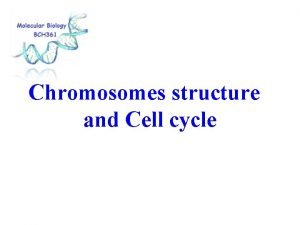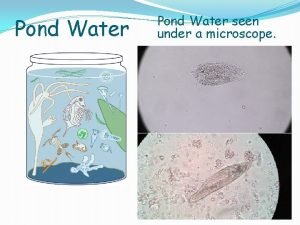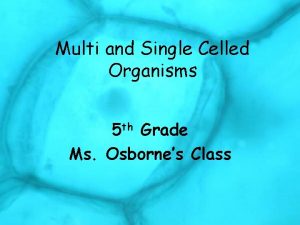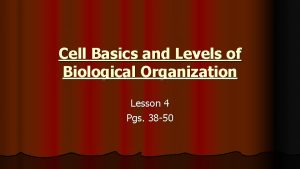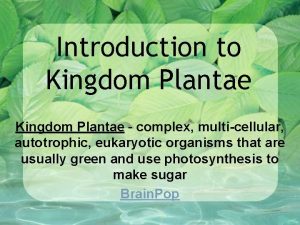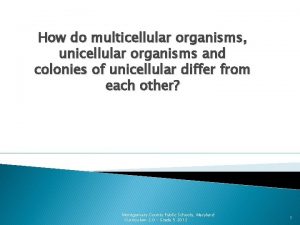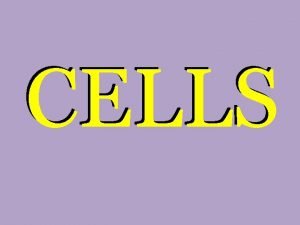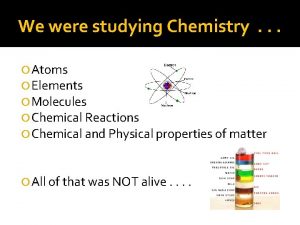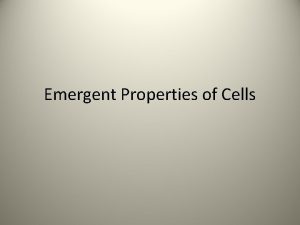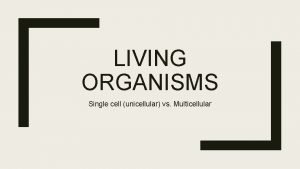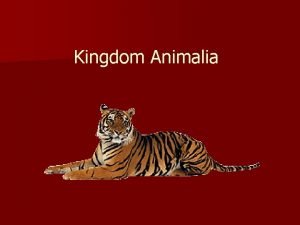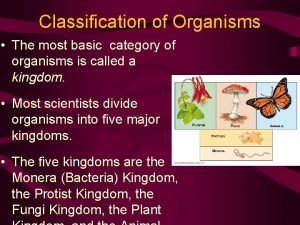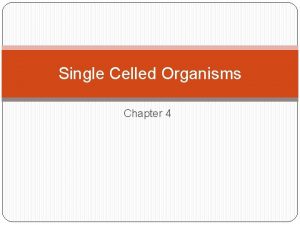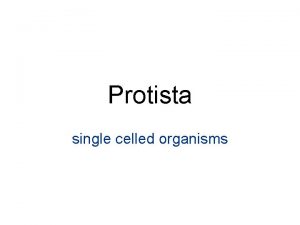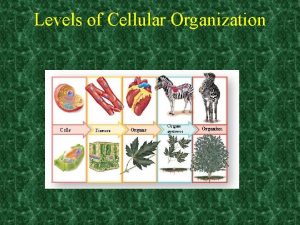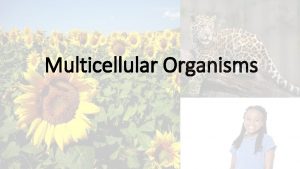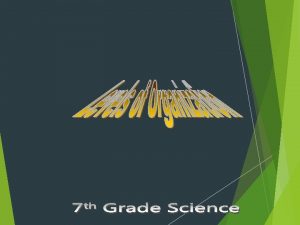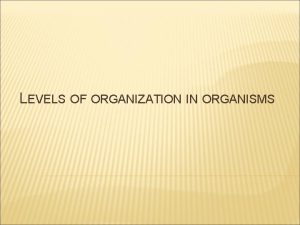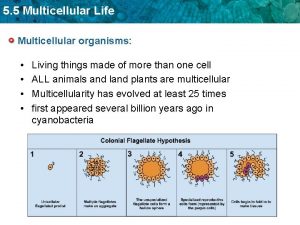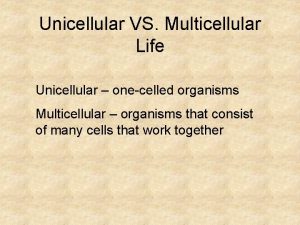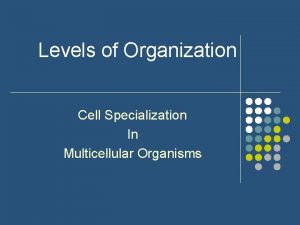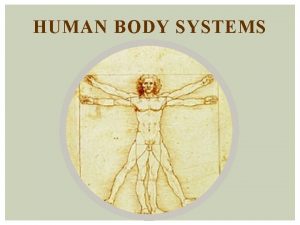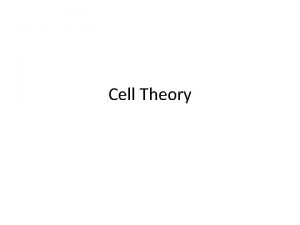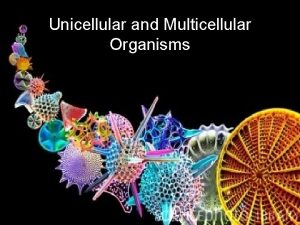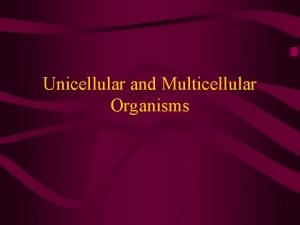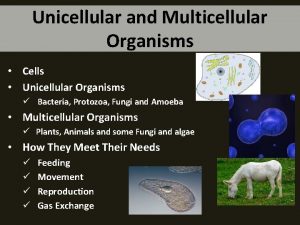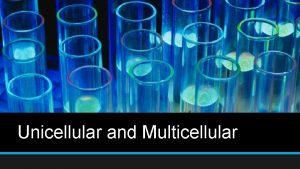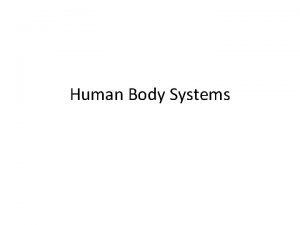Multicellular Organisms Organization of Organisms AND Cell Theory



























- Slides: 27

Multicellular Organisms & Organization of Organisms AND Cell Theory Study Guide Answers

1. In the first paragraph how does the author describe multicellular organisms? The author describes multicellular organisms as an organism has more than one cell, it’s multicellular.

2. How does the author define the word organism in the article? An organism is defined as ‘an individual living that is capable of responding to stimuli, growing, reproducing, and maintaining homeostasis and perform all of these essential functions by itself.

3. What is the real meaning of multicellular? A multicellular organism is made up of many cells that are dependent on each other to perform these essential functions as a group.

4. Describe the key characteristic of multicellular organisms. The key characteristic of multicellular organisms is it has divided up the labor and each cell has become specialized to perform a specific task.

5. Are cells limited in what they can do when they cannot perform all essential functions on their own? It depends on the level of organization you’re looking at.

6. What are groups of cells that share a common structure and function that usually perform only one or a few very specific tasks within an organism? tissues

7. How does the author describe the word organ in paragraph 6? The author describes the word organ as a structure composed of several different tissues that work together to perform a certain task.

8. What are the tissues (within an organ) capable of doing? The tissues within an organ work together to perform more complicated tasks than any one tissue of capable of.

9. Describe an organ system. An organ system is a group of organs and tissues that work together to perform a major function of the organism.

10. Provide an example from the text of an organ system and how it functions in the body? The circulatory system working together circulates blood throughout the body through the heart, blood vessels, and blood.

11. Which level of organization does the author mention last in the article? organism

11. How does the author describe an organism? The author describes the organism, which as a whole, is capable of all essential functions.

13. Give an example of one way a specialized cell and a single cell are compared and contrasted in the last paragraph.

At the cellular level, the specialized cell is limited to performing its specific task and is more limited than a single cell organism OR At the organizational level, specialization and division of labor opens up almost limitless possibilities for variation of structure, and it frees multicellular organisms from the limits of single-celled organisms in terms of size and complexity.

13 B. Name the levels of organization of organisms (from the smallest to the largest). Cells tissues organism organ system

Cell Theory

14. The author states the discovery of the cell was made possible by the invention of the microscope.

15. Which scientist improved the lens-grinding techniques used to advance microscopes? Antoni van Leewenhoek

16. In what year did Antoni van Leewenhook report he had observed “little animals” through the use of a microscope? 1678

17. What did this pave the way for in the scientific community? It paved the way for wide acceptance that a hidden world existed just beyond the limits of human vision and encouraged many scientists to take up the microscope in their investigations.

18. Who was the first to recognize that all plants, and all the different parts of plants, are composed of cells? Mathias Jacob Schleiden

19. In what year was “Microscopic Investigations on the Accordance in the Structure and Growth of Plants and Animals” published? 1839

20. What did it include? It included the first statement of the cell theory: All living things are made up of cells.

21. In 1858, Rudolph Virchow proposed that all living cells must rise from pre-existing cells.

22. What did Louis Pasteur set out to disprove? Spontaneous generation

23. The establishment of the cell theory helped to solidify the basic steps of the modern scientific method.
 Unicellular vs multicellular
Unicellular vs multicellular Cell division in multicellular organisms
Cell division in multicellular organisms Meaning of multicellular
Meaning of multicellular How are unicellular and multicellular organisms alike
How are unicellular and multicellular organisms alike Images of unicellular and multicellular organisms
Images of unicellular and multicellular organisms Pond water
Pond water Single celled life form
Single celled life form Levels of biological organization
Levels of biological organization The scientist mathias schleiden studied _______ in ______.
The scientist mathias schleiden studied _______ in ______. What does multicellular mean?
What does multicellular mean? Which kingdom is autotrophic
Which kingdom is autotrophic Multicellular organisms
Multicellular organisms What is cell called
What is cell called Multicellular organisms
Multicellular organisms Multicellular organisms
Multicellular organisms Eudocot
Eudocot Emergent properties of multicellular organisms
Emergent properties of multicellular organisms Is a multicellular organism
Is a multicellular organism Animalia
Animalia Kingdoms that contain consumers
Kingdoms that contain consumers Is a nerve cell multicellular or unicellular
Is a nerve cell multicellular or unicellular Competitive interaction
Competitive interaction Block comparison vs point by point
Block comparison vs point by point One celled prokaryotes
One celled prokaryotes Single cell organisms
Single cell organisms Process organization in computer organization
Process organization in computer organization Denuding tower
Denuding tower Linear chromosomes in eukaryotes
Linear chromosomes in eukaryotes

